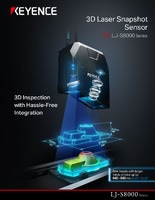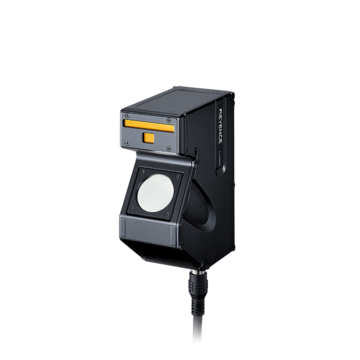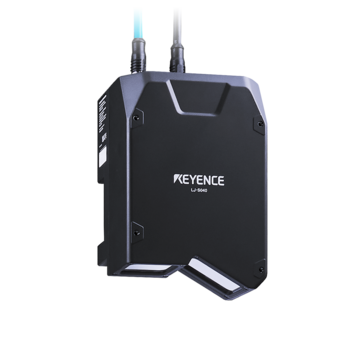Measurement Sensors
Dimension Measurement
Displacement Measurement
Dough Processing Sensors
Dough production factories face two big challenges: speed and safety. Commercial bakeries must keep up with consumer demand without compromising product safety and quality. Industrial tools (like mixers and dough preparation machines) help ensure both.
For instance, a dough sheeting machine is essential for rolling and flattening the dough to a uniform consistency, which is vital for mass-producing items like flatbreads, puff pastry, and crackers. Modern dough processing solutions ensure the efficient production of high-quality bread, pastries, cookies, and other baked goods.
Get detailed information on our products by downloading our catalog.
View Catalog![Automated Measurement and Inspection Examples [Food and Containers]](/img/asset/AS_138240_L.jpg)

What Are Dough Processing Solutions?
Various sensors and inspection systems are used to monitor the entire dough manufacturing process, from the dough-mixing stage to final product checks. Some of these include mixers and dough preparation equipment. The type and number of dough processing solutions required in a production facility depends on the type of product and production needs.
Inspection is a crucial part of dough making, especially in commercial baking factories. Due to growing health concerns, regulatory requirements emphasize the quality of ingredients and safe production practices, which necessitate the use of inspection solutions.
Dough Processing Inspection
While human input coupled with the use of several tools can help with ingredient measurement, measurement sensors provide an extra layer of quality control.
They help determine if the consistency, size, weight, and other properties of mixed dough are in proportion to the ingredients used. Any deviation from established quality standards signifies a problem. Problems can then quickly be addressed so that finished goods meet specifications and are safe for consumption.
In modern production lines where high volumes of baked goods must be delivered to the market, human inspection cannot be relied upon to avoid production setbacks and inconsistencies. Depending on the sophistication of the production line and the stage of production, 3D laser sensors are commonly used sensors for dough processing solutions.
We’re here to provide you with more details.
Reach out today!

Benefits of Using Advanced Dough Processing Solutions
One benefit to using non-contact inspection systems is that they can inspect dough volume and thickness. For example, laser profilers take 3D scans of dough to verify width, height, shape and position.
This data is invaluable because it can be used to identify dough that has clumped together. Clumped dough can result in damaged machinery, clogged production lines and excessive downtime.
Another benefit is production efficiency. Modern systems are quick enough to stay ahead of production.
Advanced inspection solutions also play a role in compliance with regulatory requirements and the delivery of quality consumer goods. Well-calibrated sensors for dough processing will help eliminate possible mistakes associated with human vision and judgment in inspection efforts.
Why Choose Our Measurement Sensors for Dough Processing Applications
As a leader in the manufacturing of measurement sensors for the food and beverage industry, KEYENCE offers a range of food processing inspection sensors and solutions that deliver consistent performance.
The KEYENCE’s CL-3000 Series, for example, is a laser displacement sensor with confocal sensing technology. This system provides high-precision measurement and can be used for various material types.
In applications where the creation of a 3D profile of an object is important, we have 3D inspection and measurement sensors that deliver outstanding results. From small bakeries to large-scale lines, these production factories benefit from our durable food processing inspection solutions.
Ready to take your dough inspection to the next level? Check out KEYENCE's line of measurement sensors today.
Contact us to learn more about how our advanced technology can help take your business to the next level.
Contact Us
Related Products
Applications
Dimension Measurement
- Thickness and Width Measurement
- Step Height Measurement
- Inner and Outer Diameter Measurement
- Measuring Angles
- Meandering/Edge Measurement
Displacement Measurement
- Positioning and Stroke Length Measurement
- Vibration and Runout Measurement
- Deflection Measurement
- Measuring Eccentricity




